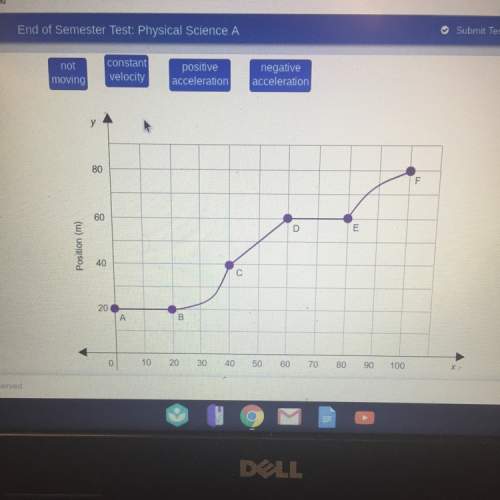
Physics, 21.04.2020 16:22, beccamae9526
The sun continuously radiates energy into space in all directions. Some of the sun's energy is intercepted by the Earth. The average temperature of the surface of the Earth remains a little above 300 k. Why doesn't the Earth's temperature rise as it intercepts the sun's energy?
A. The Earth reflects the sun's light.
B. The Earth radiates an amount of energy into space equal to the amount it receives.
C. The energy only raises the temperature of the upper atmosphere and never reaches the surface.
D. The thermal conductivity of the Earth is low.
E. The heat is carried away from the Earth by convection currents.

Answers: 2
Other questions on the subject: Physics

Physics, 21.06.2019 20:10, FinnaCryDotJpeg
Which force is most responsible for binding together an atom's protons and neutrons? electrostatic gravitational nuclear magnetic
Answers: 1

Physics, 22.06.2019 06:00, tylorroundy
Aball is thrown upward. at a height of 10 meters above the ground, the ball has a potential energy of 50 joules (with the potential energy equal to zero at ground level) and is moving upward with a kinetic energy of 50 joules. what is the maximum height h reached by the ball? consider air friction to be negligible. 1. h ≈ 10 m 2. h ≈ 50 m 3. h ≈ 30 m 4. h ≈ 40 m 5. h ≈ 20 m 003 10.0 points which of the two object shown below has the greatest kinetic energy? a m b 1 2 m v 2v 1. kinetic energies are the same. 2. a 3. b 4. unable to determine. 004 10.0 points tim, with mass 74.6 kg, climbs a gymnasium rope a distance of 3.1 m. the acceleration of gravity is 9.8 m/s 2 . how much potential energy does tim gain? answer in units of j. 005 10.0 points a car is moving at 64 miles per hour. the kinetic energy of that car is 5 × 105 j. how much energy does the same car have when it moves at 111 miles per hour? answer in units of j. 006 10.0 points an 102 kg man climbs up a 1 m high flight of stairs. the acceleration of gravity is 9.81 m/s 2 . w
Answers: 3

Physics, 22.06.2019 08:30, khambay
Researchers determine that the biodiversity in a woodland region is declining. they identify two major threats to the region's biodiversity, a method to address each threat, and the expected outcome of each method. this information is shown in the table. a) reforestation would not benefit many species because most forest species live on the ground. b) reforestation would take the longest time to be effective because trees take several years to grow. c) biological augmentation would benefit only a few species because is is typically not very effective. d) biological augmentation would take less time to ve effective because it targets the majority of prey species.
Answers: 3

Physics, 22.06.2019 16:40, Crxymia
Aparticle's position is given by x = 3.00 - 9.00t + 3t2, in which x is in meters and t is in seconds. (a) what is its velocity at t = 1 s? (b) is it moving in the positive or negative direction of x just then? (c) what is its speed just then? (d) is the speed increasing or decreasing just then? (try answering the next two questions without further calculation.) (e) is there ever an instant when the velocity is zero? if so, give the time t; if not, answer "0". (f) is there a time after t = 3 s when the particle is moving in the negative direction of x? if so, give the time t; if not, answer "0".
Answers: 3
Do you know the correct answer?
The sun continuously radiates energy into space in all directions. Some of the sun's energy is inter...
Questions in other subjects:


Mathematics, 03.04.2020 00:01

Biology, 03.04.2020 00:01




Social Studies, 03.04.2020 00:01









